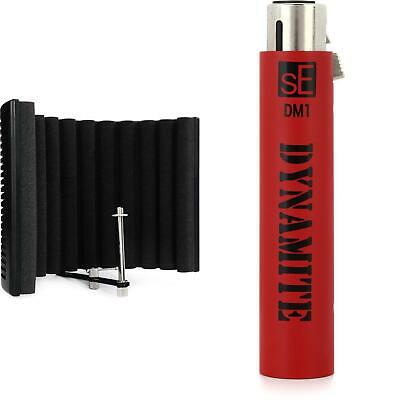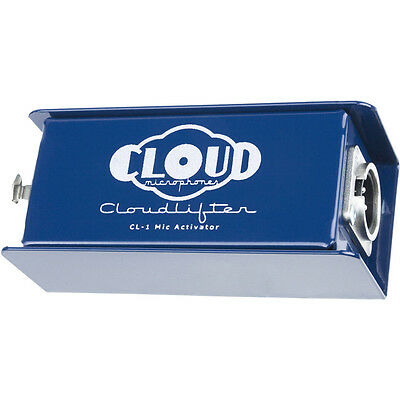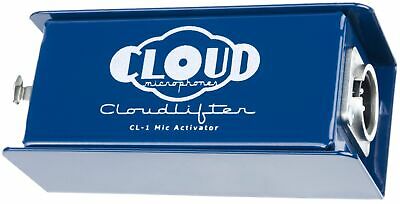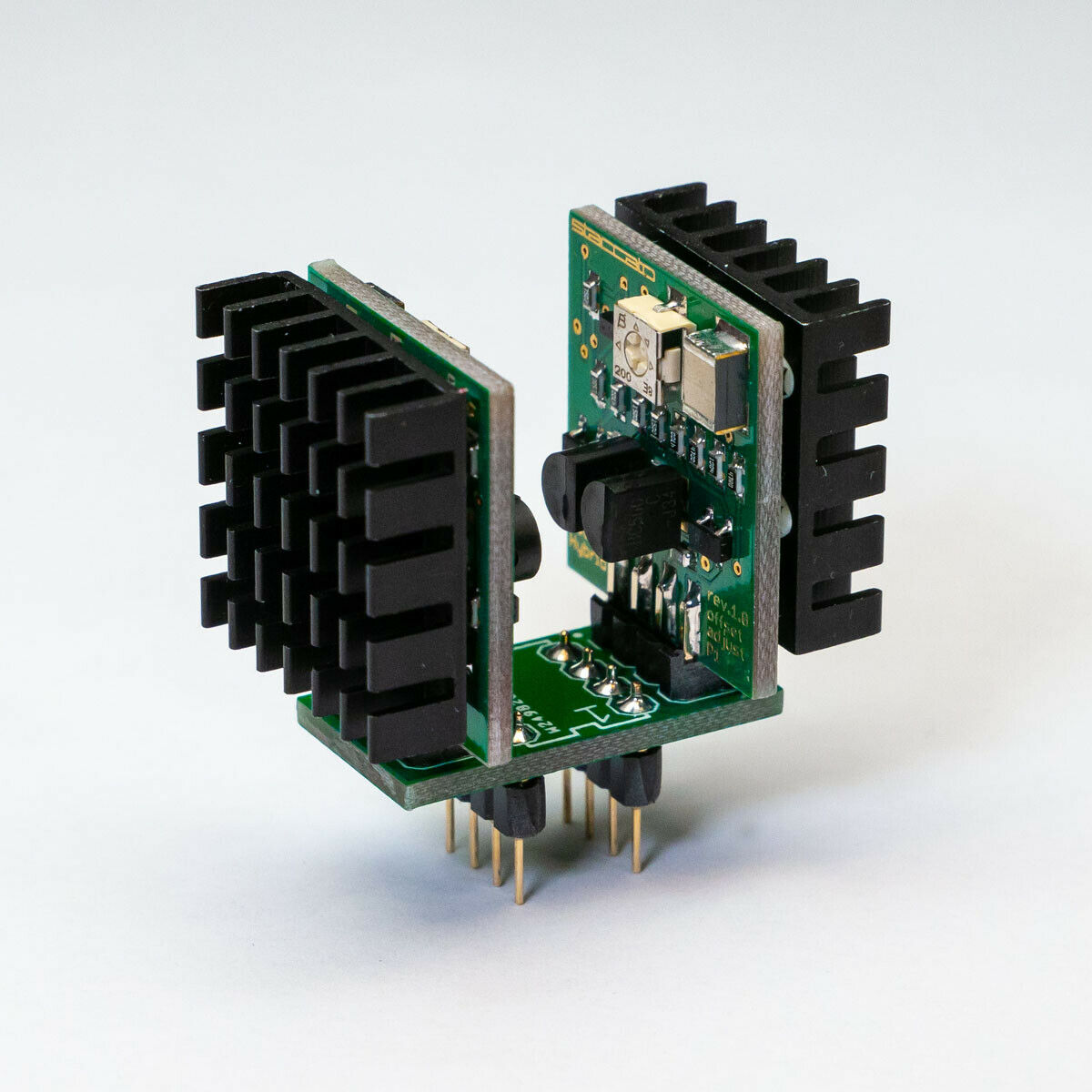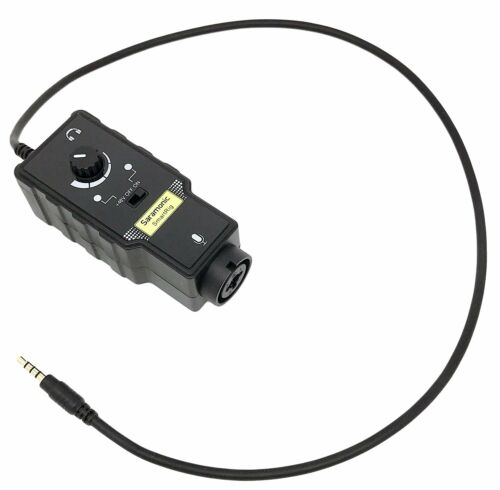-40%
Toft Audio ATC-2
$ 396
- Description
- Size Guide
Description
These are brand new old stock. Never been opened or used! Below is a review by SOS....Toft Audio have updated some pedigree vintage designs which offers two channels of mic preamplification, compression, and EQ.
Toft Audio is the brainchild of Malcolm Toft, and Alan Hyatt of PMI Audio, who convinced Malcom to join him at PMI Audio to create the Toft product line. Malcom, who started out as a recording engineer in the '60s at London's Trident Recording Studios, before becoming involved in the production of several revered console designs for Trident Audio Developments, such as the 'A' range, Series 80 and TSM.
The 2U ATC2, provides two recording channels, each comprising mic preamp, equaliser and dynamics. The individual circuit stages have been derived from established designs: the mic preamp is the same as that employed in Toft's recording consoles, and the dynamics and equaliser sections apparently borrow heavily from some of the vintage Trident designs.
Construction
The ATC2 is a surprisingly compact unit which extends only about 145mm behind the rack rails. The thick front panel is finished in silver with black legends, while the rest of the case is black with white legends on the rear panel. The unit's connectivity is comprehensive, each channel boasting separate electronically balanced mic and line inputs on XLRs, plus an additional parallel TRS socket for the line input. This is also balanced, even though the rear panel suggests it is unbalanced — it can, of course, accommodate unbalanced quarter-inch plugs. The output is provided on both electronically balanced XLR and TRS sockets. There is also an unbalanced instrument DI input on the front panel for each channel. The only other facility on the rear panel is the ubiquitous IEC mains inlet, with integral fuse holder and voltage selector. It is worth noting that channel one's I/O facilities are directly behind channel two's controls, and vice versa — which can be confusing when plugging the unit up by leaning over from the front!
Internally, the unit comprises two high-quality PCBs, one which covers the entire base of the case, and a second board which is roughly half as deep mounted above to carry the top row of front-panel controls. The electronics are all standard-size components, and all the ICs are in sockets for easier servicing. A small toroidal transformer is mounted on the right-hand side of the case. The microphone input is handled by a Burr-Brown INA217 chip, which is Texas Instruments' pin-compatible replacement for the well-known but obsolete SSM2017. The INA217 boasts excellent noise performance for 200Ω microphone sources, and extremely low distortion characteristics even at high gains. All the other active devices are 'common or garden' TLO72s, with a single socketed FET to provide the gain reduction in the dynamics section.
Controls
The two channels are laid out identically side by side, with the preamp and dynamics controls grouped in the top row and the equaliser along the bottom. A circular VU meter provides output-level or gain-reduction metering. The preamp section simply offers a mic/line selector toggle switch, the rotary gain control (with a light detented feel), and a phantom-power switch with an associated LED. The gain range spans +6dB to +60dB in mic mode, and ±20dB in the line mode.
The level calibration seemed a little off here and there on the review model. To achieve a 0VU output meter level, a balanced line input of +6.5dBu was required on one channel, and +5.2dBu on the other (with the gain set to its central unity position). This may be a side-effect of the detented gain control, which causes the gain to jump in steps of roughly 1dB, and also makes it difficult to precisely match the gain between the two channels. Both channels produced balanced output levels of -1.4dBu for a 0VU output meter reading which seemed at odds with the handbook's suggestion that the unit's nominal operating level is +4dBu. (The manufacturers claim that they couldn't reproduce this problem when the unit was returned to them. However, we were unable to carry out further testing before we went to press.) The instrument input automatically overrides the mic and line inputs, but the gain control still adjusts the gain over about a 36dB range. The DI input has an impedance of over 100kΩ.
The compressor section is based around an FET as the controlling device — as opposed to the more common VCA, variable-'Mu' valve, or optical systems. FET-based compressors were popular for a period in the late '70s and '80s, before cost-effective VCA designs became available, and include such venerable units as the Urei 1176. This particular design is based on that used on Trident consoles in the 1980s. The ATC2 provides four continuously variable controls to set the attack, release, ratio and make-up gain, along with a toggle switch to bypass the processing (an LED illuminates when the dynamics section is switched in) and another to switch the VU meter to show the amount of gain reduction.
Whereas most compressors provide a threshold control to determine the point at which compression is applied, the ATC2 has a fixed threshold (around -8dBu). So to achieve a desired degree of compression the input level control has to be used, in conjunction with the ratio control. Variable make-up gain of up to +20dB is provided to compensate for the inherent reduction in peak level when the compressor is operating. Strangely, this control also allows the output level to be reduced by up to 50dB. The handbook provides no specifications for the attack and release settings — the controls are simply marked 'F' and 'S' at their extremes. However, the fastest attack does appear to be very fast, and the release control spanned a useful range for voices and instruments. The release time also appears to be programme dependent, since following large amounts of compression the release time is initially quite fast but then slows as the gain reduction recovers closer to zero, This approach helps to avoid audible pumping effects. The ratio control ranges between 1:1 and 12:1.
As before, the level calibrations don't quite tie up. With a 0VU signal on the meter, switching the compressor section in (with 1:1 ratio and the make-up gain set to unity), resulted in a 2dB drop in output level. It's a small point, but one that could become frustrating in some circumstances.
Lurking between the two sets of channel controls is a 'Couple' switch which ties the compressor side-chains of the two channels together for stereo working. The configuration is such that the channel generating the highest side-chain signal will determine the amount of gain reduction applied equally to both channels, but it is important to set all four controls identically for both channels.
The lower row of controls is associated entirely with the four-band equaliser, which is similar to that of the Trident Series-80 console. The bottom and top bands have a shelving response with switchable turnovers (60/120Hz and 8/12kHz). The two mid-bands have continuously variable centre frequencies, spanning 100Hz-1.5kHz and 1kHz-15kHz, but the bandwidth (Q) of these filters is fixed. The gain controls of all four bands span ±15dB boost/cut and have centre detents for unity gain. An overall EQ bypass is provided (with the obligatory LED), and there is also another toggle switch to select a 50Hz 12dB/octave high-pass filter.
The panel layout doesn't make the circuit topology clear at all, but in fact the equaliser is placed in advance of the compressor. This is a common practice, and means that boosting low frequencies, for example, will cause the compressor to work harder on the low frequencies than the mid-range and high frequencies.
In Use
The ATC2 is very simple to operate and everything works pretty much as expected.
In terms of sound quality, the ATC2 does a workmanlike job, with an emphasis on musicality. The mic input stage is simple and without frills, but it is also quiet and clean, with plenty of headroom and low distortion. In comparison with high-end preamps, the sound is generally smaller and more constricted, but it does a reasonable job for the price. The instrument DI input is a useful extra facility which will appeal to many, and although the quoted input impedance isn't as high as in many designs, it certainly worked well enough in practice with electric guitar and bass.
The equaliser section is versatile, and the frequency ranges and overlaps have been well chosen. Likewise, the choice of bandwidth is a fair compromise between being narrow enough to enable surgical corrections when necessary, and being broad enough to allow subtle tonal shaping. The inclusion of a separate high-pass filter is very welcome, as is the ability to switch the EQ out completely.
The dynamics section does all that it should, although I would have liked more informative legends on the controls, with intermediate values in addition to the extreme positions to make it easier to note down settings between sessions and projects. Some specific values on the attack and release controls would have been nice too. The adoption of a fixed-threshold design works well enough in practice, although I can't fathom the idea behind a make-up gain control that also reduces the signal level by up to 50dB. Had it gone all the way down to silence it would have been useful as an output fader, but as it is I can see no practical application for it at all. Even level matching to semi-professional equipment only requires a nominal 14dB of attenuation, so I am at a loss as to the intended functionality of this control.
The FET design does, indeed, have a certain sonic character which is recognisably different to that of an optical or VCA compressor. It tends to be a little harder-sounding perhaps, and more precise than an optical compressor, but slightly cleaner and more musical than some VCA designs. With careful setting up it is virtually transparent when used for modest amounts of dynamic control, but can be used to add a distinctly punchy character to the sound when driven harder.
The market for voice processors, which is essentially what the ATC2 is, is very buoyant and fiercely competitive. The ATC2 has the advantage that it is a dual-channel unit which can be used equally for tracking or mixing applications, with mono or stereo signals — although I have some reservations about the accuracy with which the two channels can be aligned to each other for stereo.
In terms of the cost/functionality balance of the ATC2, its closest competition in the UK is from products like the Focusrite Platinum Mixmaster, but single-channel units (at roughly half the price) include the Focusrite Platinum Voicemaster, SPL Track One, Drawmer MX60, and Dbx 376 (more expensive, but with a digital output). These are all well-respected units offering variations on the basic theme, and selecting which is the most appropriate in any particular circumstance can only be a personal decision. That the ATC2 can be listed in such company says all that needs to be said. If you are in the market for a comprehensive but affordable analogue processor, the ATC2 must be added to your evaluation short list.
Rupert Neve Portico 5017
Mobile Mic Pre / DI / Comp
Overview
Comprised of a rugged, portable chassis with world class Portico pre-amp, compressor and DI circuits as well as two channel operation, variphase, silk and DI/mic blending capabilities, the Portico 5017 is an innovative and powerful tool for recording or live performance. In replacing the Portico 5016 Mic Pre / Variphase DI, the 5017 Mobile DPC adds single knob compression, DI / Mic Pre blending, and a go anywhere design to a well established classic.
With Portico Series custom transformers and silk mode, the Mobile DPC’s sonic signature is nothing short of legendary. It’s the 5017’s revolutionary feature set however that make it an indispensable tool for studio recording, live recording and stage performances.
Dual Channel Use
Used as a two channel device, a lead singer and guitar player, can take the classic studio quality of the 5017 wherever they go; using the DPC for a Vocal mic pre and compressor, as well as a separate DI preamplifier. To achieve this, the blend control should be selected as fully DI (blend off), and an internal jumper can be selected to apply the compressor to the mic pre signal. When engaged, Silk mode would effect both vocal and guitar tracks, and the HPF control would effect only the mic path.
Blended Use
Used as a single channel device for instruments, the 5017 can be used to phase align, combine and compress direct and amplified signals. To achieve this, use the DI for the instrument’s direct signal and the mic preamp for the speaker cabinet signal. The blend control is used for mixing direct and amplified signals to achieve the desired tonal blend between the two sources, and the variphase is used to minimize or extenuate phase cancellations between the two signals. To compress the blended signal, the internal compressor jumper must be set to the blend path (this is the default setting). This technique could also be used to create a single, mixed output of a guitar and vocals.
The Compressor
Based around a new LDR (light dependent resister) design, the 5017’s opto-coupler compressor has been simplified to a single threshold control with auto make up gain. By default, the compressor is set to a fixed 2:1 ratio with an internal jumper to change between standard and fast time constants. To set the compressor, simply dial the threshold control down until the desired amount of compression is achieved. An LED light indicates when the compressor is active.
Vari-Phase
In addition to the standard polarity reverse, the 5017 also incorporates a vari-phase control to adjust the phase incrementally. This control is useful any time two signals derived from the same source are combined.
For instance, even with careful placement, the combination of close miced drums and overheads, can often yield hollow sounding results. By using the variable phase adjust, the direct signal can be phase rotated until the signals are naturally aligned.
This technique is also extremely useful when combined with the internal blend control on instruments. A bassist, using both direct and miced signals can blend the two into a single output, using the vari-phase to reach an optimal alignment. By adjusting the phase in the 5017, the musician or engineer can find the absolute best mic position without regard to the phase relation to the direct signal.
With the 5017, the Portico sound is always within reach.
Two Channel Operation
With two transformer coupled outputs, the 5017 has separate line outputs for the DI/Blend and Mic signals when the blend control is set to fully DI. The mic output is always independent.
Silk
Much could be written about this feature, suffice to say, that it gives a subtle option to enhance sound quality in the direction of vintage modules. The silk button reduces negative feedback and adjusts the frequency spectrum to provide a very sweet and musical performance. We suggest you try it and make your own judgment.
Mic Gain
Mic gain is from 0dB to 66dB. Overall gain to restore the apparent program level
DI Gain
DI Gain is from 0dB to 30dB
DI input
Balanced or unbalanced Hi-Z input for instruments
High pass filter
The high pass filter is a valuable aid in any signal chain but particularly so in a microphone preamplifier. Signals below 80hz can be attenuated at a rate of 12db / octave, getting rid of building rumble, air handling motor hum etc.
Phantom power
Provides 48v phantom power to microphones. Controlled by a switch on the back of the unit.
Phase invert
Reverses the polarity of the mic input
Threshold
When signals exceed the “threshold” level, the gain is reduced at a controlled 2:1 ratio, with attack and release time constants set to standard or fast depending on the internal jumper setting.
Indicators
Indicators on the 5017 denote signal presence and clipping on both DI and mic signals, as well as compressor activation.
Internal jumpers
Two internal jumpers in the 5017 can be set to change the compressor from the mic channel to the di / blend channel, and to change the compressor time constant from standard to fast.
Tech Specs
Dimensions
7.5” (deep) x 6.5” (wide) x 2” (high)
Frequency Response:
Main Output, no load,
–0.2 dB @ 10 Hz
–3 dB @ 160 kHz
Noise:
Measured at Main Output, unweighted, 22Hz-22kHz,
Terminated 150 Ohms.
With gain at unity better than –100 dBu
With gain at 66 dB better than –62 dBu
Equivalent Input Noise better than –128 dBu
Noise Factor 1.5dB
Maximum Output Level:
Maximum output from 20 Hz to 40 kHz is +23 dBu.
Total Harmonic Distortion and Noise:
@ 1kHz, +20 dBu output: Main Output: Better than 0.001%
@ 20Hz, +20 dBu output: Main Output: Better than 0.002%
Silk Engaged: Better than 0.2% Second harmonic
Crosstalk:
Measured channel to channel: Better than –90 dB @ 15kHz.
Phantom Power:
+48 Volts DC +/- 1%
Reviews
“The Portico 5017 was a Swiss army knife of audio solutions, making both acoustic and electric guitars sound better. The Compressor and Silk controls were icing on the cake; the Blend feature is perfect for guitarists who know the magic of microphones. A back-mounted button for 48-volt phantom power (for use with condenser mics) is more evidence of the 5017’s handiness.”
Vintage Guitar
5017: Mobile Mic Pre / DI / Comp
“The Portico 5017 is the most versatile and portable piece of gear I have, not to mention it sounds amazing in addition to the practicality. Even better is it doesn’t hurt the wallet.”
Adrian Quesada (Groupo Fantasma, Brown Out)
5017: Mobile Mic Pre / DI / Comp
“”This thing sounds really good! It saved my ass a bunch of times on a recent European tour.” ”
Jim Devito
5017: Mobile Mic Pre / DI / Comp
“For novices seeking their first quality piece, I recommend this little, humble utilitarian over a rack full of brittle mic pres and mushy compressors…. For high-fidelity loving, traveling musician/self-recordists, the 5017 is a must have.”
Rob Tavaglione
5017: Mobile Mic Pre / DI / Comp
“Sounds great….having the convenience of the Blend, Silk, compression, and phase adjustment all in one neatly integrated box can be a huge problem solver.”
Paul Vnuk Jr.
5017: Mobile Mic Pre / DI / Comp








